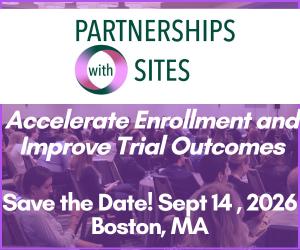Duke on Creating a Career Path to Address Clinical Trial Workforce Challenges
As the clinical research workforce remains a worry for the industry, three clinical research professionals from Duke share how the university’s Workforce Engagement and Resilience Program helped them transition to clinical research, and how it’s helping people from nontraditional backgrounds and skills view the field as a viable career path.

What challenge in the clinical research workforce does Duke’s WE-R Program aim to address?
Sally Taylor: The Workforce Engagement and Resilience program (WE-R) is a way to streamline job descriptions, become a more cohesive entity and start developing the identity of a “clinical research professional” by providing some continuity and consistency across different job descriptions.
Sherry Huber: As we try to get people to consider clinical research as a career path, we can show that – like nursing, for example – there are training programs and career progression. The goal is that this program hopefully addresses some of our workforce engagement issues, brings people into jobs, provides them better training and better direction, and shows them that there is a path forward.
Why was the work to overhaul job descriptions, career progression, etc, necessary for developing a better workforce in clinical research?
Sally Taylor: For people to feel confident in the research we’re doing, we wanted to ensure that staff are well-trained. The program aligns with different competencies and domains so that there are training opportunities. There are also certain jobs that are tiered, meaning you can stay within a specific position and you have opportunities for advancement before you have to apply for a new role. In an institution as large as Duke in particular, it’s important that there is consistency and cohesion to ensure a level of excellence.
Sherry Huber: For example, we currently have a new clinical research nurse coordinator. She has required nursing competencies, but she also has IRB training, EPIC training, etc. We have a clinical research coordinator who’s doing the same modules, but without the medical component. We combine those modules with shadowing opportunities to get them onto studies so that they can do hands-on work under supervision.
"As we try to get people to consider clinical research as a career path, we can show that – like nursing, for example – there are training programs and career progression."
How did this program help you in your own transition into clinical research?
Barbara Estay: I went into clinical research after completing a certification in Spanish medical interpretation. I stumbled into clinical research knowing very little about the field, and was excited to be part of a team and help people, especially Spanish-speaking people, participate in clinical research.
It took a lot of effort on my part at the beginning to get familiarized with the material, learning about the IRB and different computer systems, etc. When you start in clinical research at Duke, there is a 90-day onboarding plan, which is great, but it also required a lot of focus because I didn’t have the clinical research background. It gave me a good foundation to understand how clinical research worked, which was helpful when I started working in recruitment.
What was critical to your success when entering clinical research as a profession?
Sherry Huber: Key for me was mentorship: a great team and a great manager. Even though I had a medical background as a nurse, I had been out of the hospital setting, and I didn’t know the research terminology or the computer systems.
As we develop the workforce, whatever the organization or clinical research unit, it needs to have mentors that can help new professionals. And beyond that, giving people opportunities to not just observe their colleagues during visits, but to actually do the work and make mistakes. We do quality reviews of our work, which correct mistakes and help our staff to do better.
"As we develop the workforce, whatever the organization or clinical research unit, it needs to have mentors that can help new professionals. And beyond that, giving people opportunities to not just observe their colleagues during visits, but to actually do the work and make mistakes."
How did you adapt relevant, but non-healthcare skills to a clinical research environment?
Sally Taylor: I had absolutely no healthcare experience, but when I looked at job descriptions, I realized that a lot of the responsibilities were managing projects, budgets, timelines, etc. I had experience with all of that. I had to learn how to read medical charts to put things into the EDC. I had to learn how to read lab results, how to understand inclusion/exclusion criteria, understanding someone’s medical history, etc.
I learned that through mentorship, having been paired with a really strong coordinator. I came into the role in the midst of the COVID-19 pandemic. That was one of the draws, and the challenges, for me. One of my first studies was in-patient and required staffing 24/7. It required five coordinators working as a team. I was able to apply my project management skills to keeping that initial study going, organizing five different coordinators to maintain track of everyone’s work. In the end, that teamwork really informed me and my knowledge.
From your on-the-ground perspectives, what are the biggest gaps in the workforce right now?
Sally Taylor: It’s the foundational roles: clinical research coordinator, clinical nurse coordinator, etc. As the complexity of research becomes greater, it requires more and more staff to keep the trials going. And as we get into precision medicine, instead of running big studies, we’re running multiple mini-studies, and we need strong, robust teams to meet that demand. There is a definite gap; we need more people moving into this space as healthcare changes in the US and around the globe.
"Diversity is crucial as we work to address health equity issues. We need to make sure that our research staff looks like the populations we’re working in."
How is Duke trying to bring new people into the profession?
Sally Taylor: Duke developed the Research Professional Network, which meets monthly on a host of topics related to clinical research. Having that network helps to develop a sense of identity around clinical research as a profession. Many of us transitioned into this work, but aligning competencies, having a formalized process, creating a community, helps younger people look at it as something they could spend their whole career on.
If we start looking to nontraditional backgrounds to build our workforce, what skills are valuable and transferable?
Sherry Huber: The service industry, whether that is food and beverage, wellness or customer service. Those people skills are the number one need, if they’re going to be patient-facing.
Barbara Estay: Communication skills, service skills, and organization. During visits, you need to be prepared to welcome people coming in to participate in research, but after the visit, there is a lot of documentation. It requires a very well-rounded person.
Sally Taylor: As we talk about developing the workforce, we need to discuss the need for a diverse workforce. Diversity in age, gender, race, sexual orientation, age, etc. Typically, hiring teams focus on a young workforce, but it is great when, as with the three of us, experienced people come into the profession. I’ve worked with a team of people who are new to the workforce, and even though I wasn’t able to mentor them on specific clinical research coordinator aspects, I was able to mentor them about being in the workforce.
Diversity is crucial as we work to address health equity issues. We need to make sure that our research staff looks like the populations we’re working in. For example, having someone like Barbara, who is bilingual, makes all the difference when you’re speaking with a potential research participant. Looking at nontraditional backgrounds and skill sets helps to address the challenge of diversifying the workforce.
What has surprised you about clinical research as a career path?
Sherry Huber: The career opportunities in this field. I wish I had found it at a younger age, and if I were just out of college, I would look at this as a long-term career path for myself. You're constantly learning and growing.
Barbara Estay: It’s fascinating to see behind the scenes and understand how investigational products and new medications get approved. Having a daughter with a chronic illness, who uses wearable devices every day, I’m very interested and enjoy learning about all the collaborative effort needed to get medical advancements at our fingertips.
Sally Taylor: The opportunities within this field are expansive. You can start as a clinical research professional, but if you want to explore different areas, whether it's more managerial or finance contract negotiation, there are different ways in which your career can expand and grow.










